How the Trampoline Came to Be
Inspired by circus performers, George Nissen created the bouncing ‘tumbling device’ that still captures imaginations 75 years later
:focal(407x175:408x176)/https://tf-cmsv2-smithsonianmag-media.s3.amazonaws.com/filer/d1/15/d115f11f-64f3-454d-b60b-35ea891a2226/george_nissen_on_trampoline-main.jpg)
When 16-year-old George Nissen of Cedar Rapids, Iowa, attended the circus in 1930, an idea started to form within the young gymnast’s mind. He watched the aerialists drop from their perches up high in the big top and land with a soft bounce on the safety net below.
Could he create a contraption that would allow a person to keep on bouncing?
It would take a number of years and a few failed prototypes, but Nissen finally found success. His invention, which he labeled a “tumbling device,” was granted a patent 75 years ago on March 6, 1945. He later received a registered trademark for “Trampoline,” which came from el trampolín, the Spanish word for “diving board.”
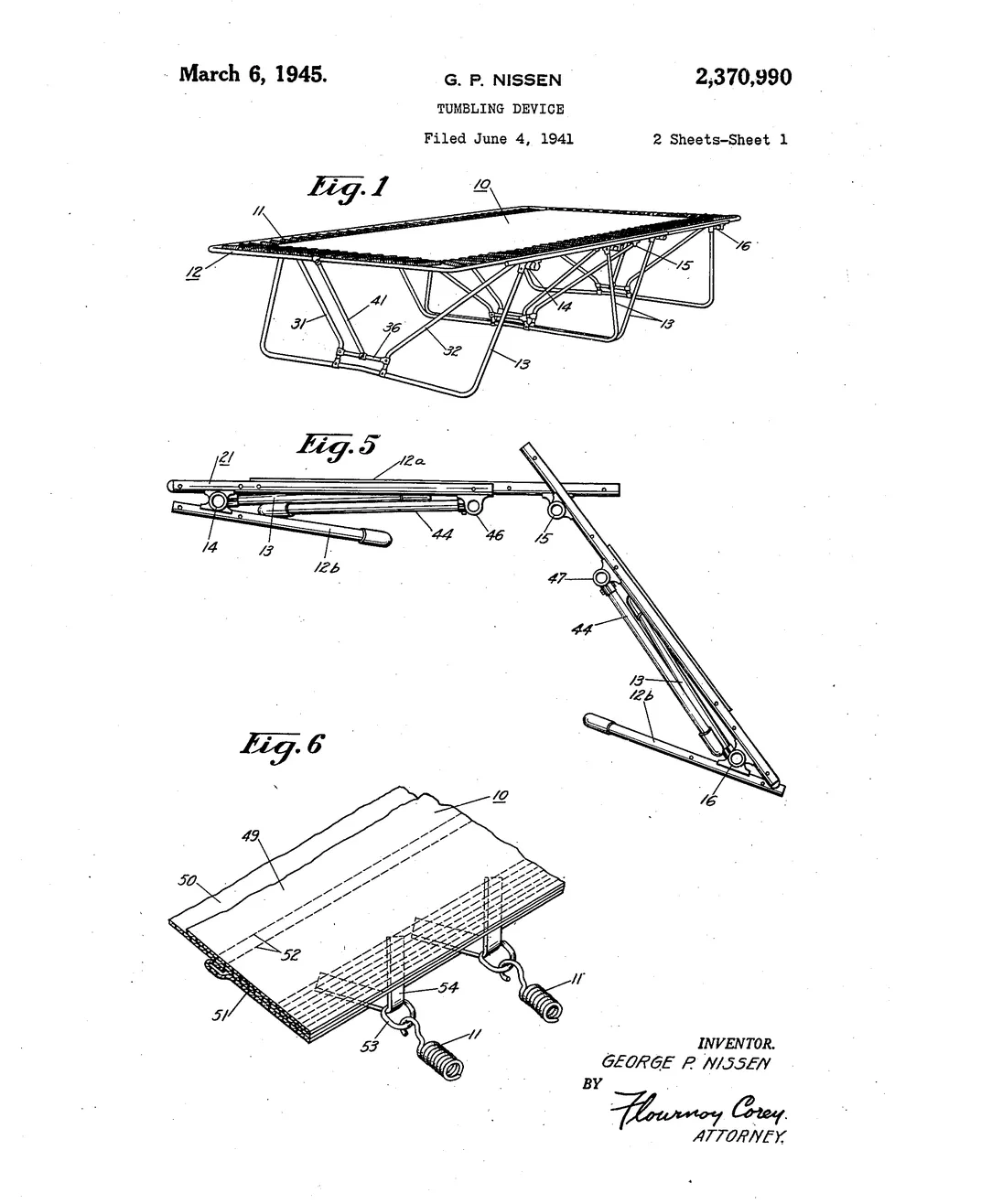
Nissen would go on to receive 44 patents, many of them related to his tumbling device, and helped create the gymnastic sport of trampolining, which combines acrobatics with bouncing. He lived long enough to see it become an Olympic event at the 2000 Games in Sydney and got to test the trampoline at the Beijing Games in 2008. Trampolining has become immensely popular with nearly $400 million in sales for backyard setups and at indoor parks around the country.
“Dad was very proud of his invention and what it led to,” says Dian Nissen, the inventor’s daughter and a national trampoline champion. “He loved it and couldn’t walk away from it. I know he would be so happy to see so many people using the trampoline today.”
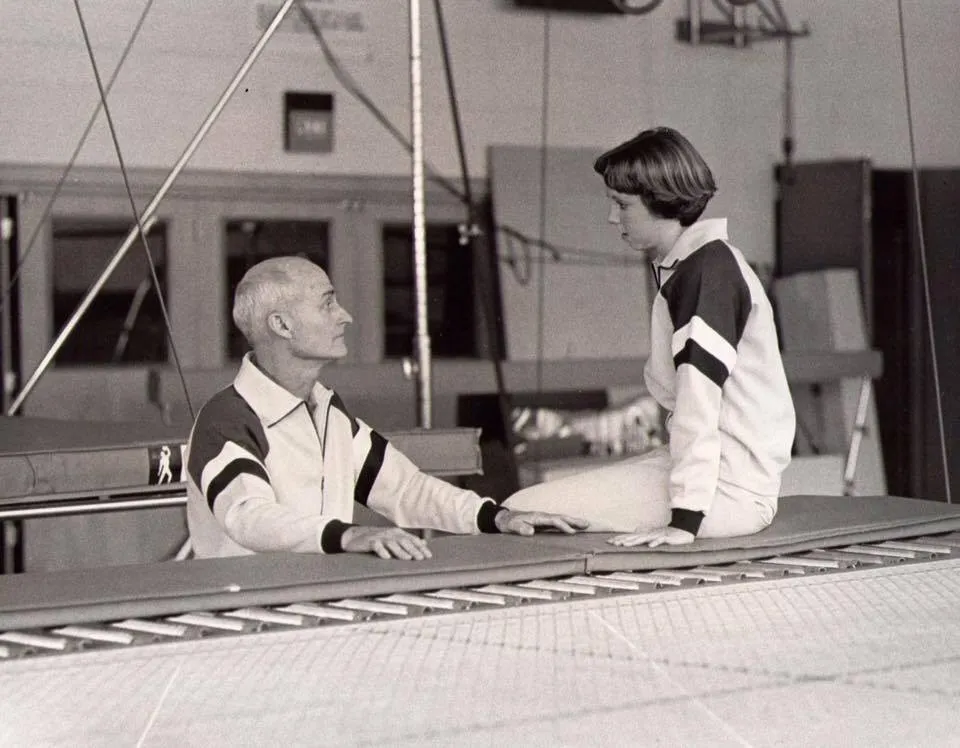
Nissen was blessed with athletic ability. In addition to being a champion gymnast—he won three NCAA titles at the University of Iowa—he was an accomplished diver, working for a time by diving off cliffs to entertain tourists in Mexico, where he also toured as part of trampolining acrobatic act. But it was his inquisitive mind that would ultimately lead him to fame and fortune.
After his inspiring visit to the circus, Nissen began working on ideas, stretching canvas across wood beams in an effort to create something that would allow him to bounce. He even dismantled his own bed and tried to use the frame for his invention.
“My grandfather couldn’t understand why he would take apart his bed like that,” Dian says.
Nissen continued to pursue his dream in college, where he teamed with his gymnastics coach Larry Griswald to produce the first viable prototype in 1934 made with angle iron, canvas and inner tubes to give it that oh-so important bounce. The rubber parts were later replaced with metal springs for durability and strength.
The duo persisted with their invention by promoting its uses with children and athletes. As popularity soared, they started the Griswold-Nissen Trampoline & Tumbling Company in 1942. Griswold was dropped from the business name after the gymnastics coach later left the business to pursue a solo career in acrobatics, diving and entertainment.
“My father knew he was on to something,” Dian says. “He took it to a YMCA camp to try it out and the kids loved it. They wouldn’t even get off it to go to the pool.”
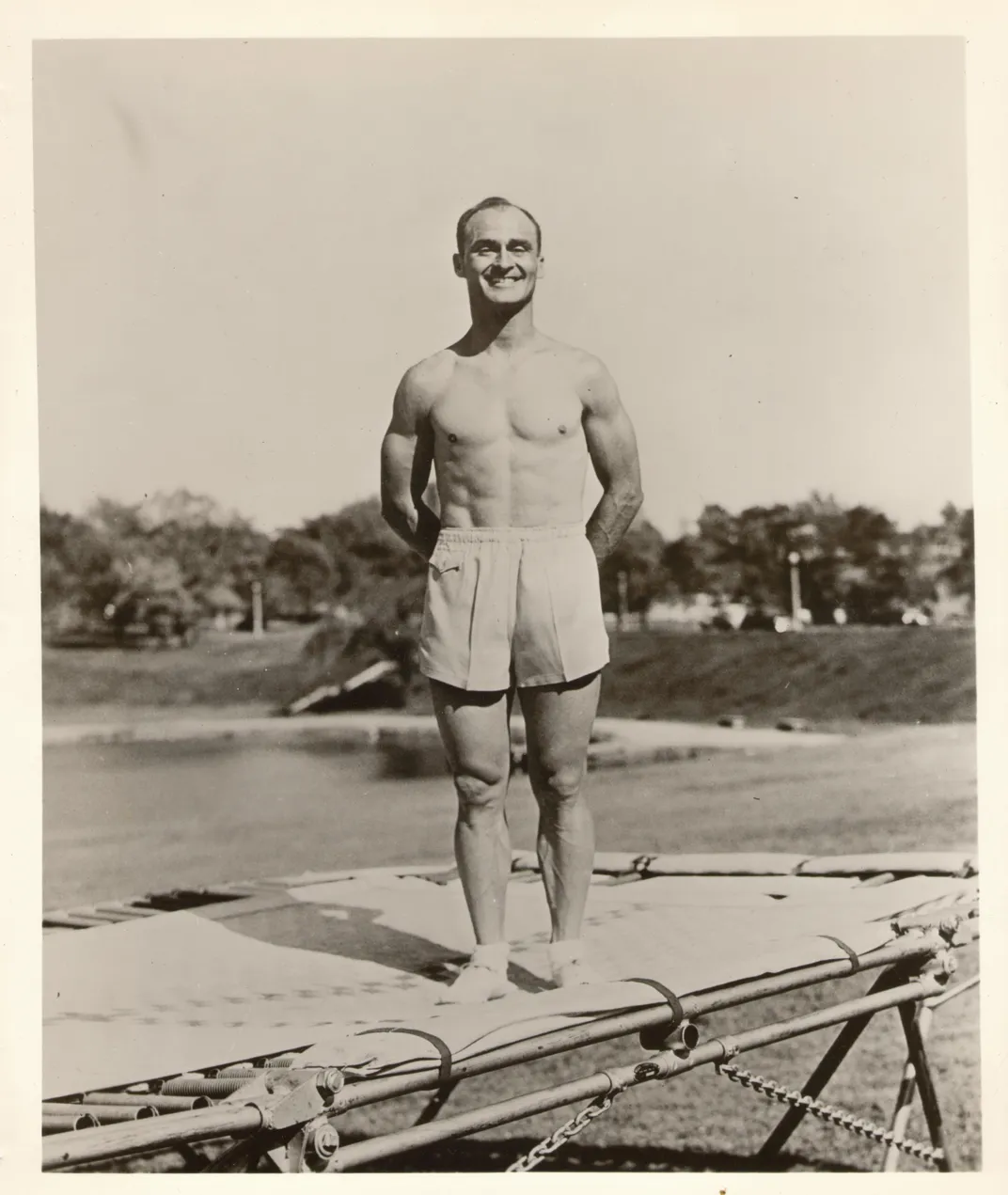
World War II is when the trampoline’s potential began to bounce into view. The military latched on to it as a training device for pilots, to allow them to learn how to reorient themselves to their surroundings after difficult air maneuvers. The pilots practiced pirouetting in midair on the trampolines to simulate combat conditions.
That relationship with the military would later extend to the space program, thanks in part to a fortuitous meeting. Near the end of World War II, Nissen was introduced to a young pilot who had gone through the trampoline training. Both were in the Navy and so shared that fraternal bond. They hit it off and became friends for life.
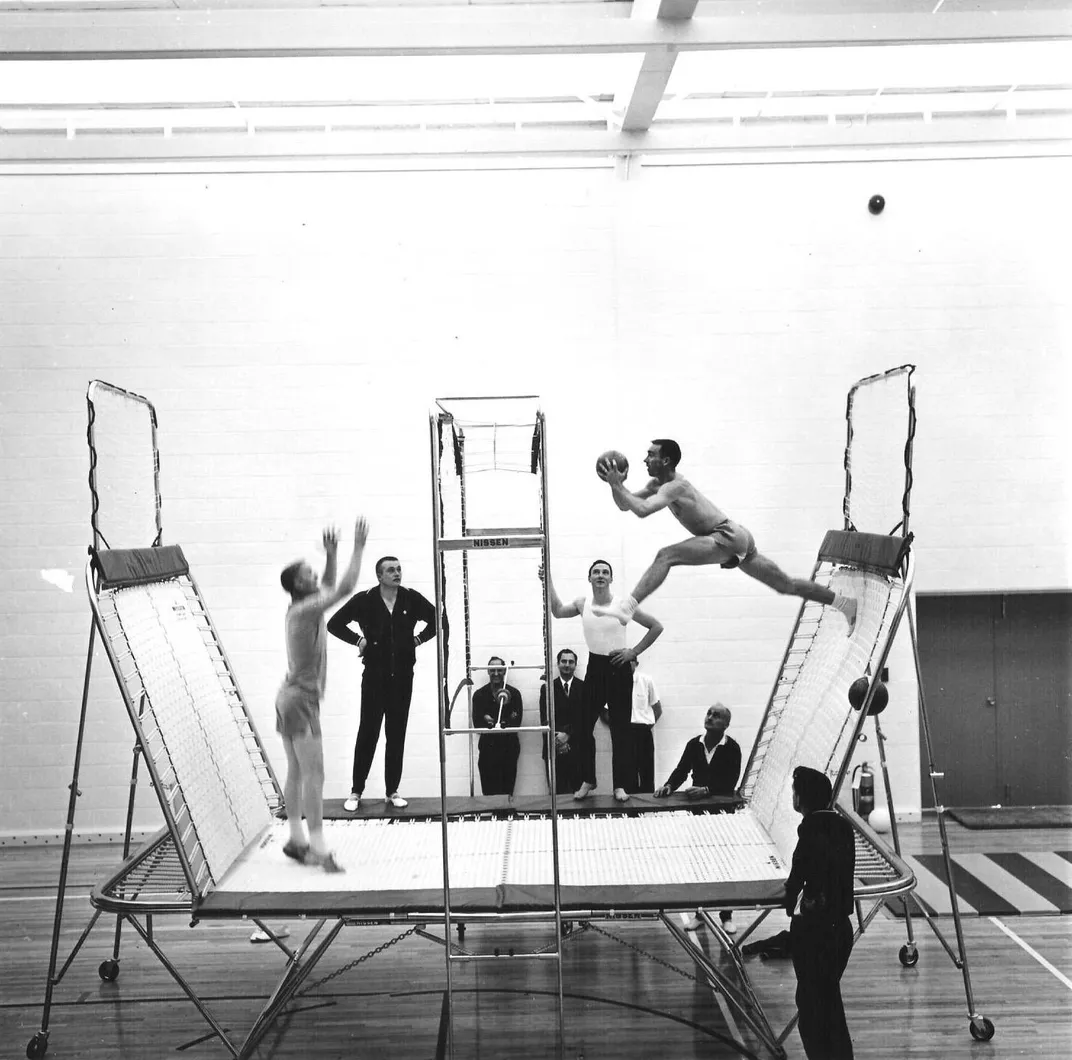
The pilot was Scott Carpenter, who would later become one of the original Mercury 7 astronauts. Together, they would help introduce the trampoline into space training at NASA and eventually create a game known as Spaceball. Two people would face off on a three-sided trampoline with a frame in the middle featuring a hole. While bouncing to and fro, one competitor would throw the ball through the hole and the other would have to stop it to save a point. (Watch it being played here.) Carpenter called the game “the best conditioning exercise for space travel.”
That connection, along with Nissen’s ceaseless promotional activities, propelled trampolining into the American consciousness during the post-war years and throughout the space era. Nissen jumped at the chance to awaken the world to its exercise benefits, which include cardio, strength, balance and range of motion, and he came up with plenty of photo ops for his invention, including jumping on one on the flattened top of a pyramid in Egypt and bouncing with a kangaroo in Central Park.
“The kangaroo was nasty,” Dian says. “It kept trying to kick my father. He would get close to it for the photos but then jump away quickly so he wouldn’t get hurt.”
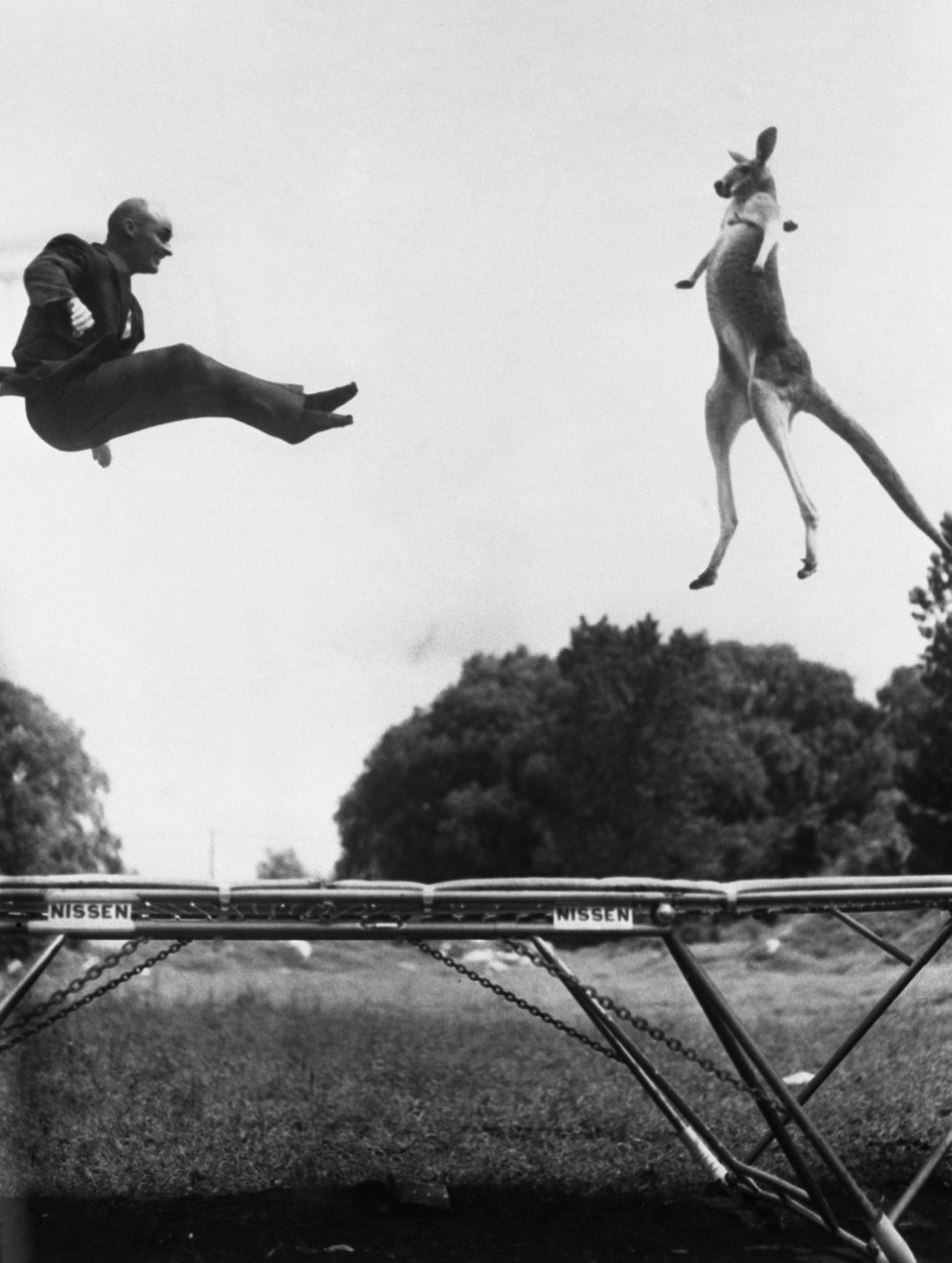
As trampolining took off, Nissen jumped to the challenge. It was recognized as an official sport in 1962 by the International Gymnastics Federation and the inventor was part of the USA team to capture the first world title in the finals with Great Britain.
Jump centers became a thing in the 1970s. Facilities where kids and adults could bounce away on trampolines sprung up across the nation. Unfortunately, these businesses were poorly regulated with little safety training for staff, resulting in a rash of serious injuries and lawsuits. Nissen spoke out against this use but could do little to control it.
The inventor sold his company in the late 1970s but would remain close to the sport he loved. He was a tireless advocate for its health benefits as an exercise and also worked to promote safe practices of the sport as it spread. One of his proudest moments was when he was in Australia to witness trampolining welcomed into the Olympics.
“That was always my goal and my dream,” Nissen said at the games. “The struggle and the journey—that’s the Olympic spirit.”
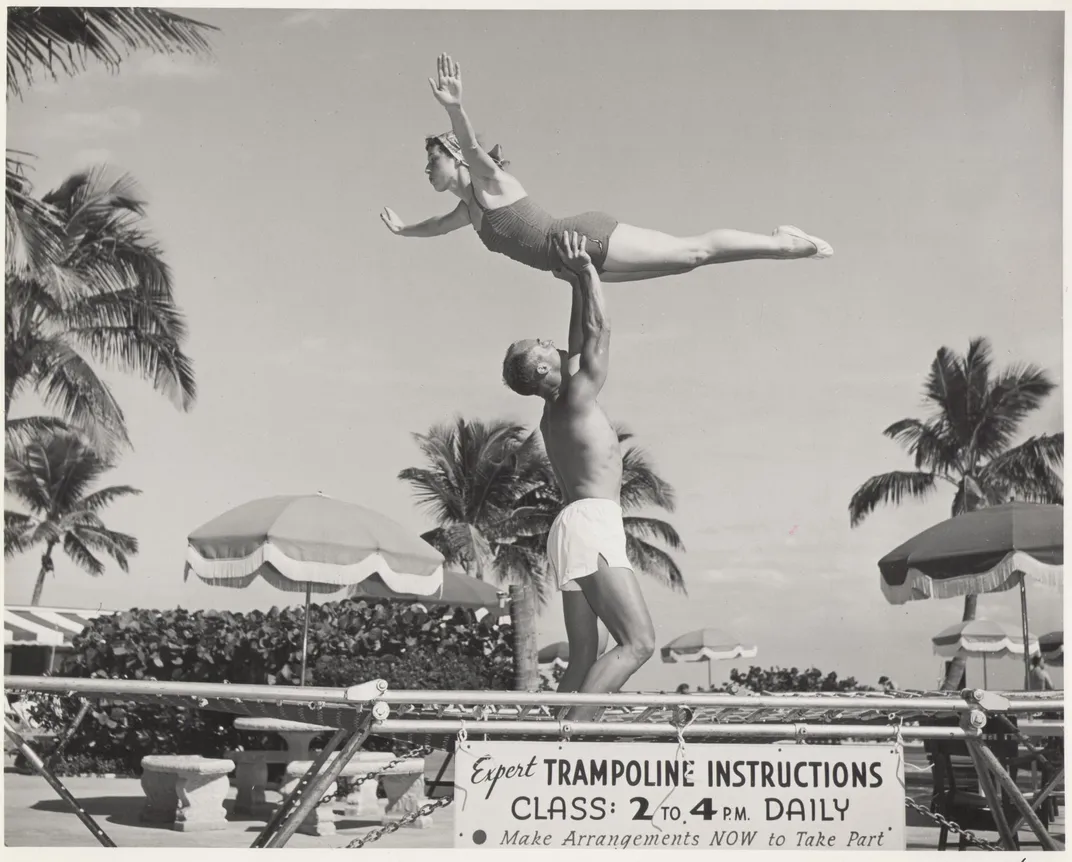
His daughter, Dian, and wife, Annie, a Dutch acrobat, were with him throughout much of the growth of the sport and business. Dian became a champion athlete and also a fitness expert. Along with her mother and father, she starred in a series of videos focusing on lighter exercises for seniors, as well as pilates and other training techniques. Today, Dian coaches trampolining from her own Nissen Trampoline Academy in San Diego. Her father died at 96 in 2010, but she believes he is never far from her.
“There’s a moment at every competition when it hits me,” she says. “I’ll look around and see all the athletes and people, and I’ll feel my dad’s presence. I’ll say to him, ‘Can you believe it?’ It’s such a wonderful feeling.”
/https://tf-cmsv2-smithsonianmag-media.s3.amazonaws.com/accounts/headshot/dave.png)
/https://tf-cmsv2-smithsonianmag-media.s3.amazonaws.com/accounts/headshot/dave.png)